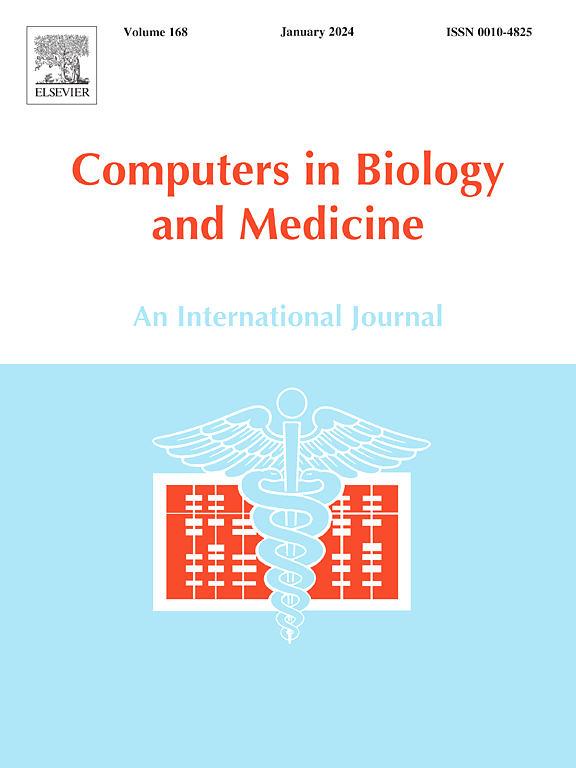A novel smart guidewire with an integrated hemodynamic sensor for central catheter placement: Design and simulation
IF 7
2区 医学
Q1 BIOLOGY
引用次数: 0
Abstract
Objective
We analyzed the differences in hemodynamic patterns along the central venous catheterization pathway and constructed a sensor-at-tip guidewire for real-time detection of temperature field changes related to hemodynamic patterns. The design was verified using COSMOL simulation and in vitro simulation tests to evaluate its potential application as a tool to facilitate navigation during catheterization.
Methods
Differences in the hemodynamic modes in the central venous catheterization pathway led to changes in the temperature field created with a thermal source. A sensor-at-tip guidewire model was used to detect real-time changes in the temperature field during catheterization. By multiphysical coupling of temperature, heating power, thermistor, and fluid velocity fields, a simulation study based on the intrinsic characteristics of thermistor material winding springs was conducted, wherein the coupling relationship between the blood flow velocity (flow rate) and temperature transfer was obtained and the design was verified by simulation.
Results
Based on a multiphysics finite element simulation, the application of a thermal flow sensor composed of a thermistor and power resistor in central vein catheterization was verified. Theoretical calculations suggested that the thermal flow sensor can be composed of a conventional wire-wound spring or a commercially available, inexpensive, small-sized (01005 package) negative thermal coefficient resistor. This study provides a low-cost, portable, and real-time navigation solution for hemodynamic monitoring that is expected to have clinical applications.
Conclusion
The sensitivity and resolution of this design met the requirements of difference analysis for heating power vs. temperature fields as well as hemodynamic changes vs. temperature fields, indicating potential applications in navigation for central venous catheterization.
求助全文
约1分钟内获得全文
求助全文
来源期刊

Computers in biology and medicine
工程技术-工程:生物医学
CiteScore
11.70
自引率
10.40%
发文量
1086
审稿时长
74 days
期刊介绍:
Computers in Biology and Medicine is an international forum for sharing groundbreaking advancements in the use of computers in bioscience and medicine. This journal serves as a medium for communicating essential research, instruction, ideas, and information regarding the rapidly evolving field of computer applications in these domains. By encouraging the exchange of knowledge, we aim to facilitate progress and innovation in the utilization of computers in biology and medicine.
 求助内容:
求助内容: 应助结果提醒方式:
应助结果提醒方式:


